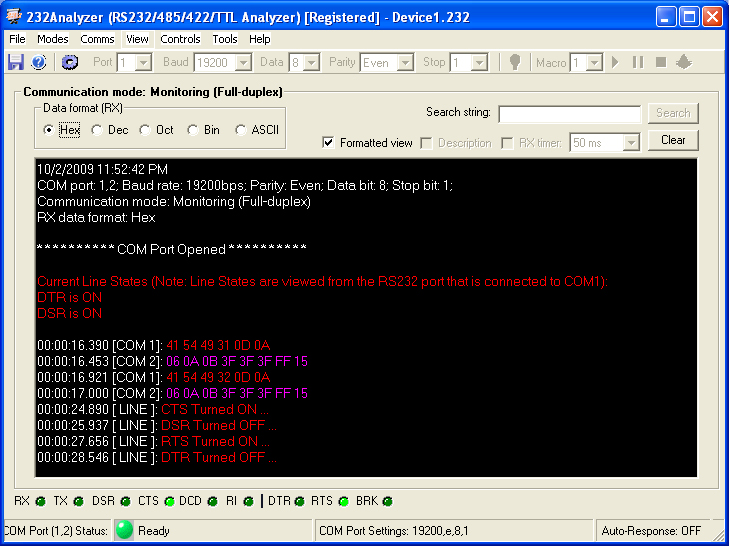
Jul 9, 2008 - I have an LCD monitor with serial output for touchscreen functionality. My desktop does not have a serial port, so I grabbed a USB-RS232. May 25, 2018 - Termite is an easy to use and easy to configure RS232 terminal. After connecting a serial cable between the PC and the remote device (or remote PC. In this configuration, Termite would typically only be used to monitor.
Slsnif is a serial line sniffer software. It listens to the specified serial port and writes all data coming through it into either stdout (default) or a log file (if specified -- see option -l). Slsnif operates either by creating a pseudo tty (pty) and linking it to the serial port, or by linking two serial ports together. In order to set up a debug session one has either to start slsnif on a given port first, note the pty it had opened (also available from file /tmp/slsnif_pty while slsnif is running), then configure the controlling software for the device being debugged to use this pty instead of the actual port, or, in case of two ports being used, simply start slsnif on two ports (see option -p) and watch the show:) Note 1: Slsnif will try to match port settings on pty and port (or on 1st and 2nd ports) as soon as it detects first chunk of data coming from the 'host side' (which is either pty or 2nd port).
If it fails (in case of a braindead controlling software that doesn't set the baudrate correctly), one has an ability to set baudrate by hand via option -s. Controlling software and slsnif should be set up to use the same baudrate, which in turn should match the baudrate used by the device connected to the port. Note 2: If controlling software is running under vmware (www.vmware.com) and pty is used, port in question should be disconnected from vmware before invoking slsnif, and connected to the opened pty after slsnif has been started. Parameters slsnif accepts the following parameters: (required) First (and only one in case of pty being used) serial port to listen to. (/dev/ttyS0, /dev/ttyS1, etc.) Options [-l ] ([--log ]) File to direct output to. Output is sent to stdout by default. [-i ] ([--in-tee ]) File to dump raw data from device to.

Multiple '-i' / '--in-tee' arguments result in multiple copies of data in corresponding files. [-o ] ([--out-tee ]) File to dump raw data from host to. Multiple '-o' / '--out-tee' arguments result in multiple copies of data in corresponding files.
[-s ] ([--speed ]) Baudrate to use. Valid options are: 50, 75, 110, 134, 150, 200, 300, 600, 1200, 1800, 2400, 4800, 9600, 19200, 38400, 57600, 115200. Defaults to 9600 baud.
[-b] ([--bytes]) Print number of bytes transmitted on every read. [-p ] ([--port2 ]) Use real serial port instead of pty. Useful when one needs to log data going between two ports. [-n] ([--nolock]) Disable locking of the port. Normally not a good idea, but can be very useful if one doesn't have permissions to write to lock directory (usually /var/lock/) [-t] ([--timestamp]) Print timestamp for every transmission.
[-x] ([--hex]) Display hexadecimal ascii values. [-u] ([--unix98]) Use SYSV (Unix98) ptys instead of BSD ptys. Besslavnie ublyudki subtitri russkie serial. [--color ] Color to use for normal output.
[--timecolor ] Color to use for timestamp. [--bytescolor ] Color to use for number of bytes transmitted. Valid values are: black, red, green, yellow, blue, magenta, cyan, white, brightblack, brightred, brightgreen, brightyellow, brightblue, brightmagenta, brightcyan, and brightwhite.